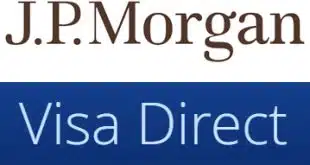Visa Inc.’s Interlink PIN-debit network is recovering after a devastating year following implementation in April 2012 of the transaction-routing requirements in the Dodd-Frank Act’s Durbin Amendment. Visa reported Wednesday that Interlink transaction volume rose 25% in its third quarter of fiscal 2013 ended June 30, a sharp turnaround from the year-earlier quarter, when volume plunged 54%. Interlink continued to experience steep declines, although not quite as bad, throughout the rest of 2012 and early 2013.
“Now that we have fully lapped implementation of the Dodd-Frank routing rules, beginning in June quarterly Interlink payment-volume growth has turned positive for the first time in over a year,” Visa chief financial officer Byron H. Pollitt told analysts at the leading payment-card network’s quarterly conference call.
Visa didn’t break out Interlink’s numbers, but total U.S. PIN- and signature-debit dollar volume hit $300 billion in the quarter, up 12.4% from $267 billion a year earlier. Debit transactions also grew 12.4% to 8.02 billion.
Visa implemented various strategies to recover in the post-Durbin world, one of which enables Visa to process a PIN-debit transaction even if the card doesn’t have the Interlink mark. But Pollitt and Visa chief executive Charles Scharf cautioned that while Interlink continues to recover, it won’t be the force it once was. “There is no way we’re going to recover all that market share that we have conceded as a result of the legislative change,” Pollitt said.
In addition to imposing draconian debit card interchange price controls on large debit card issuers, the Durbin Amendment outlawed exclusive network arrangements between issuers and networks. Federal Reserve rules implementing that part of the amendment hit Visa hard because exclusive deals between Visa and issuers helped Interlink capture, according to estimates by Digital Transactions magazine, about 53% of the PIN-debit market by 2009 and Visa 73% of total U.S. Visa and MasterCard debit dollar volume. But last year, issuers that offered cards only with the Visa logo for signature debit and Interlink for PIN debit had to add access to at least one more PIN network. The Fed’s idea was to give merchants more transaction-routing choices and potentially lower their interchange expenses.
The routing rules appeared to boost the market shares of rival PIN-debit networks such as MasterCard’s Maestro or Discover Financial Service’s Pulse, at least for a while. But Visa’s comeback strategy appears to be working. On Tuesday, Discover reported that Pulse’s dollar volume declined 3% to $40 billion in the second quarter “due to merchant routing and competitor actions.
Discover didn’t name any rivals, but chief executive David Nelms in his conference call with analysts clearly implied Visa. “Pulse has gone through a period of great share gains and growth over the last six or seven years, generally. But I think we are, right at the moment, in a much more challenging time because of some of the rules tying PIN, debit, and signature together,” he said, according to the Seeking Alpha transcript service. “Some of the pricing strategies are fixed and variable, designed to really benefit a 70% market-share player. And we are doing our all, absolute best to maintain volumes and margins, but we’re going to continue to be under assault here for a while.”
That isn’t to say that Visa doesn’t feel the competitive heat itself. Scharf, in his opening comments, spent more than three minutes addressing tokenization—technologies designed to mask critical payment card data to prevent transaction fraud. He specifically mentioned a new tokenization venture tentatively called Secure Cloud and headed by The Clearing House Payments Co. LLC, which is owned by 22 U.S. banks. Some observers say the banks want a piece of the growing market for technology-based payment services where Visa and MasterCard, which they used to own, are heavyweight players.
Scharf didn’t critique Secure Cloud, but he did give his opinion about what any successful tokenization program should do. “This is an area where everyone needs to work closely together and it’s paramount that we ensure transparency, security, and integrity so that the integrity of the payment system remains,” he said. “It’s got to be standards-based, technology-agnostic. It needs to address the needs of everyone globally, not just in the United States.”
In addition to competitive issues, Scharf addressed the numerous legal and regulatory issues Visa faces in the U.S. and worldwide. He predicted the controversial settlement in the big merchant interchange litigation pending in U.S. District Court in Brooklyn, N.Y., will get final court approval even though merchants representing more than 25% of Visa’s credit card volume have opted out of it. Scharf also said a recently floated plan by the European Commission, the anti-trust authority in European Union nations, to sharply cut credit and debit card interchange will take 18 to 24 months to play out.
The hard numbers, however, proved solidly positive for Visa in the third quarter. In addition to the double-digit debit growth, Visa’s U.S. credit card purchase volume increased 10% to $270 billion. Operating revenues jumped 17% to $3 billion, and the company swung to a $1.23 billion profit from a $1.84 billion loss a year earlier, when it took a $4 billion charge for litigation expenses.




